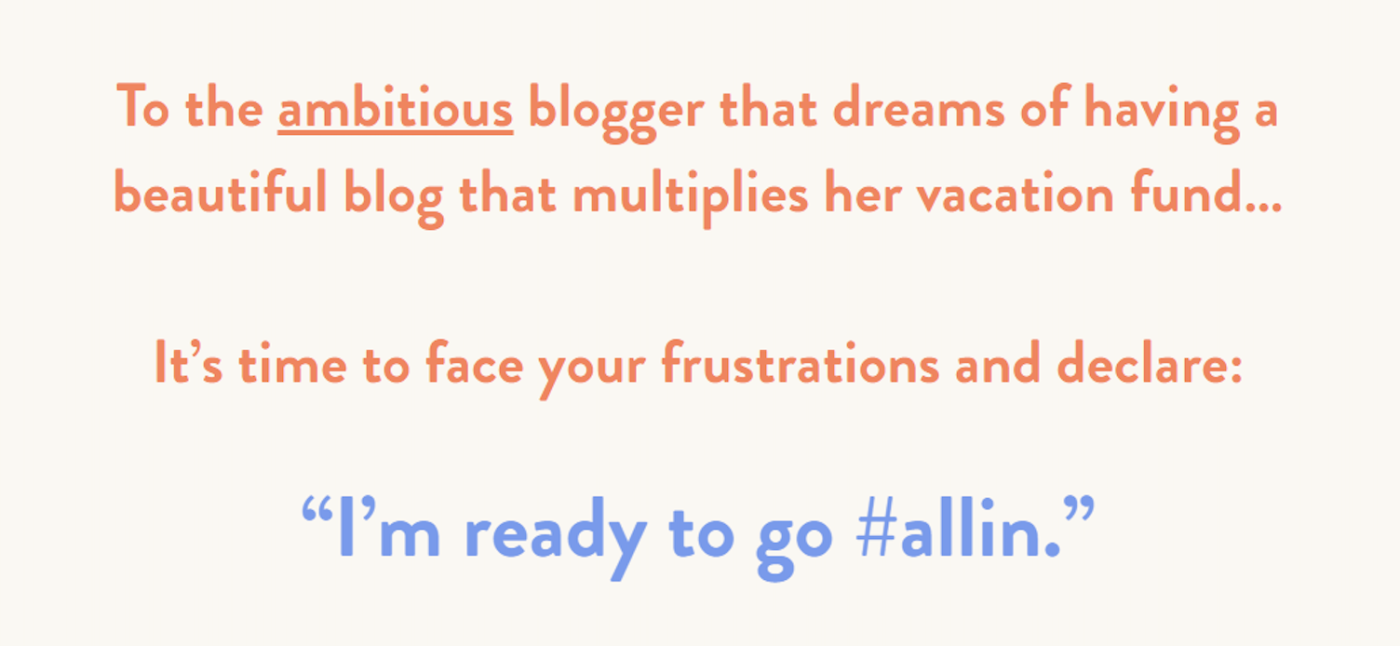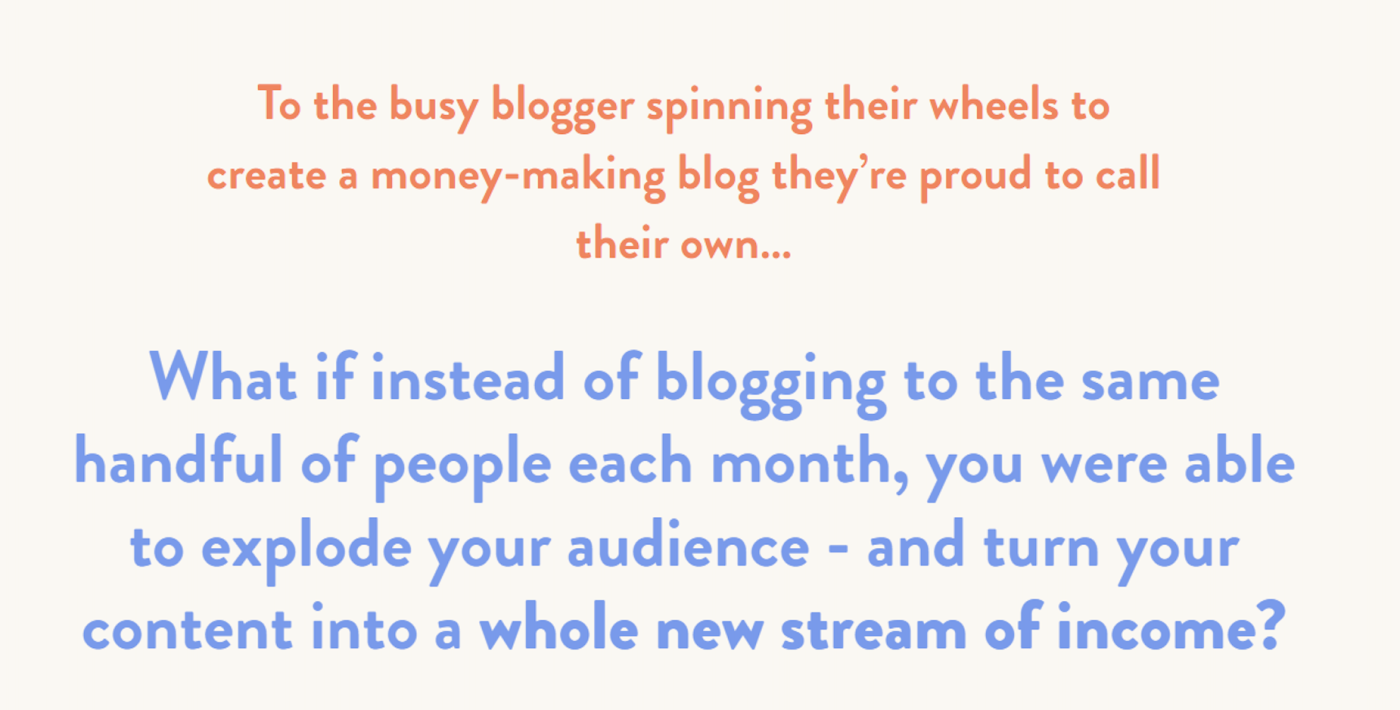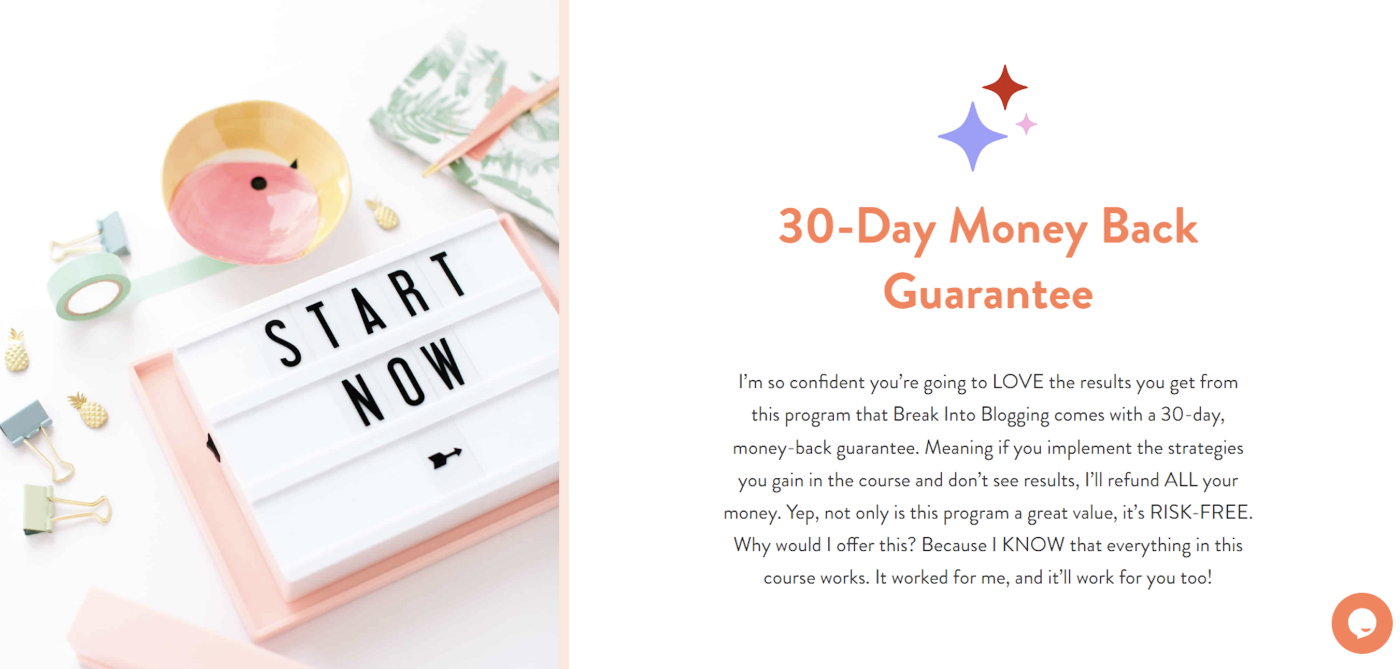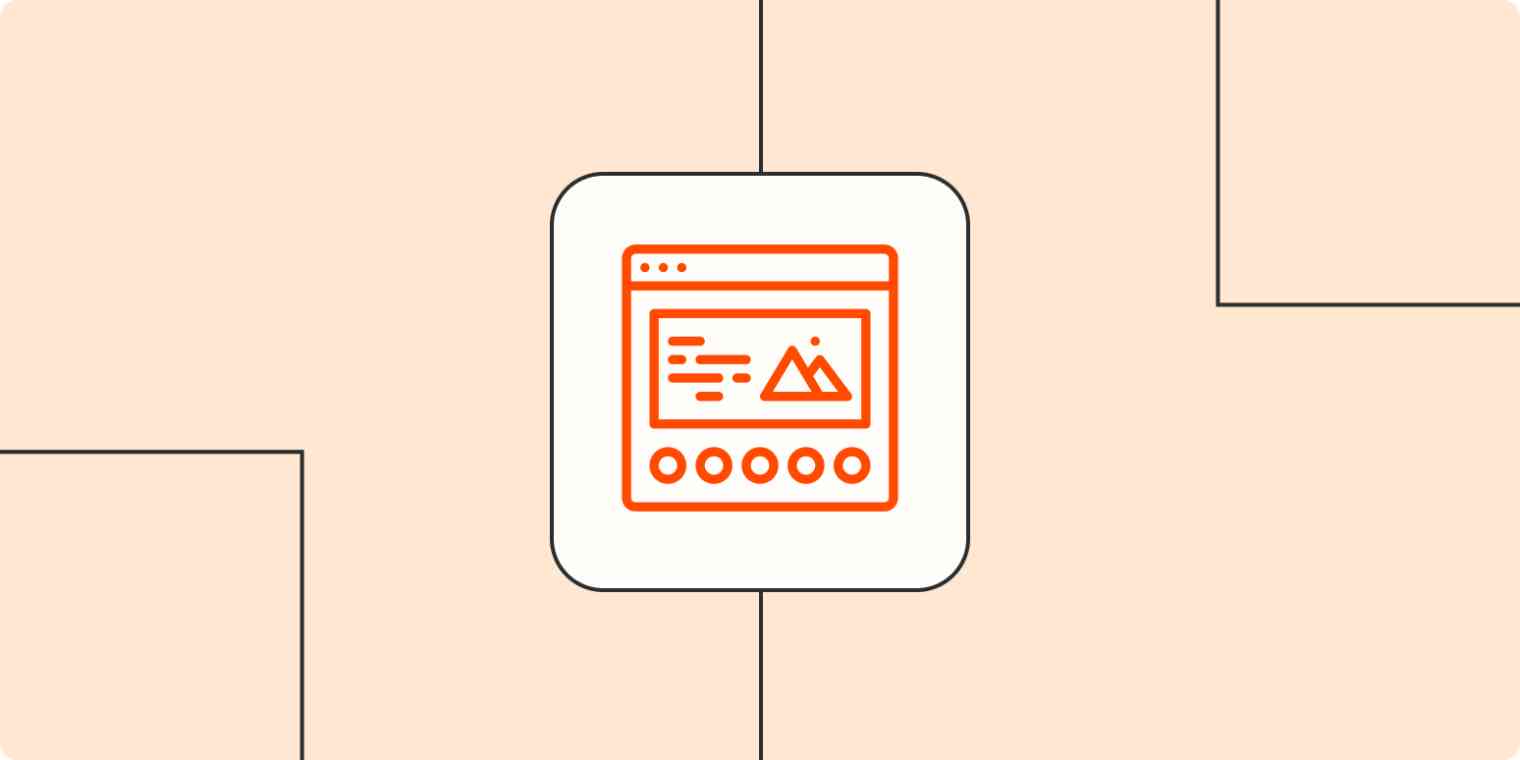"Will my sales page convert?"
It's the question that haunts coaches and course creators in the run-up to launch day. And it used to keep me up at night, back when I was obsessed with trying every hot marketing tip I read online.
As a copywriter at a successful launch agency, I was taught to apply urgency and scarcity on sales pages wherever possible. To reel readers in with abundant promises of wealth and success. To get the sale at all costs. We were the kind of old-school direct response copywriters that had a copy of Kennedy's "The Sales Letter" on our desks. And for a while, everything was great.
Profits climbed. We welcomed new members to the team every other week. And the CEO bought the whole team takeout to celebrate our seven-figure growth. We had it all figured out. Until… we didn't.
In 2021, around the time Facebook announced the iOS update, slowly—then quickly—things started to fall apart. Ad spends increased. Conversion rates fell. And refund requests were rife. People were "sick of webinars" and could smell the pitch coming a mile off.
If I wanted to stay ahead of the game, my understanding of what makes great copywriting had to change.
High-converting copy is about understanding your reader, not marketing trends
Consumers have grown tired of "traditional" selling and have learned to distrust anything that resembles an unwarranted sales pitch. And more so than ever, they're fed up with seeing the same ads over and over again on their feed.
In a hyper-connected, digital world, consumers crave conversation and connection. And as a result, copywriters have had to up their game, especially when it comes to writing a high-converting sales page.
Unsurprisingly, there's no magic "secret" to writing copy that creates meaningful connections. It's simply about making readers feel understood. And when it comes to empathy, no amount of marketing hacks can substitute for deep customer research.
So, before you write a word of your sales page, make it your goal to:
Send out customer surveys
Set up customer interviews
Dissect online reviews for similar products
Collect social media posts from your target audience
When sorting through the data you've collected, what you're looking for is repeated messages, emotional moments, and voice-of-customer that shed light on what's going on in your audience's mind before they decide to purchase your product.
As you group your findings, you'll uncover the deep needs and desires that are driving your audience toward solutions like yours. You'll learn what anxieties keep them from clicking through to your checkout page. And you'll identify what limiting beliefs are holding them back from embracing your solution.
It's this switch to research-driven copywriting that gives way to copy that empowers—not manipulates—readers into becoming successful buyers. I went all in on this strategy as a course creator, and here's what I saw:
240% increase in sales for an SVG business course
320% increase in sales for a guitar repair business course
$240K+ sales for a tech course (without Facebook ads)
When it's time to decide what copy to keep or cut on your sales page, eliminate the term "best marketing practice" from your vocabulary. Your new catchphrase is: "This is what my customers are telling me."
5 ways you can use your customer research to send your conversion rates soaring
Your audience can help you make decisions about what to say and how to say it. But timeless copywriting principles and consumer psychology will give you a solid starting point for writing copy that converts. I now run my own launch copywriting agency, APT Content. And my clients pay a premium for me to implement data-backed copywriting techniques like the ones I share below.
1. Set the stage for a meaningful conversation by writing to one reader
There's a reason we're supposed to define our target audience before we start throwing random messages into our copy. After all, no one identifies with "everybody." But I suggest taking it one step further: pick one person from your audience, and write to them. It's called the Rule of One.
By writing to one reader rather than a faceless crowd, you have an opportunity to set up a meaningful conversation. Instead of speaking to your reader as a two-dimensional profile made up of vague demographics like age range, you get to dig deep into what's going on in their life as they read through your page.
Of course, the success of this approach depends on how deep you go with your customer research. To flesh out your one reader, ask yourself questions like:
If they had a magic wand, what's the first problem they'd wish away?
How have they been let down in the past while searching for a solution?
What anxieties might keep their finger hovering above the "buy now" button?
By asking questions like these, you'll flesh out your made-up avatar into a thinking, feeling person that you can connect with through your copy. It's the difference between copy that kind of resonates and copy that gets readers thinking, "wow, they get me." And readers that feel understood are more inclined to buy.
2. Frame the problem your product solves in the context of your reader's life
In copywriting, a pain point is an underlying problem that drives someone to your solution. Neck pain drives people to get massages, tooth sensitivity drives people to upgrade their toothpaste—what's driving people to you?
Problem-based sales page frameworks like PAS (pain, agitation, solution) are popular, especially among groups like course creators, but they can seriously harm conversion rates when used incorrectly. After all, readers are more likely to read your headline than the body copy, and PAS can take a bit too long to flesh out on the page.
Let's take a common problem-focused hook I see on a lot of sales pages:
"Do you feel overwhelmed?"
This copy is guilty on two accounts.
First, it presents readers with an easy exit. All the reader has to answer is "no" to decide that what follows on the page won't be relevant to them.
Second, the success of this hook depends on readers feeling acute overwhelm when they land on the page. If they've just gotten off a cheerful phone call with their nan, the overwhelm they feel when juggling a million admin tasks won't be top-of-mind. And chances are, they'll bounce.
It's not enough to use a problem-focused hook to grab attention. Readers need to appreciate the pain of the problem in the context of their own life. You need to conjure a specific, painful moment that brings all that overwhelm to the surface and drop them into that moment.
Take this example from one of my client's sales pages:


By switching out a generic, dream-focused headline for a specific, pain-orientated headline, their conversion rates increased by 300%. Of course, the bloggers reading this loved the idea of having more money for vacations. But according to our customer research, what they were more driven by was the frustration of working overtime to create a blog that was only getting seen by a dozen people.
So when choosing which problem to lead with, don't reduce meaningful pain points to vague questions. Dig deep into your customer research. And pick out moments that conjure the kinds of emotions that drive action.
3. Weave in moments of ultra-specificity
No two ways about it: specificity sells. Adding meaningful details makes your copy more memorable. And numerous examples suggest that specificity can even make your argument more convincing. Take the court case study by researchers Jonathon Shedler and Melvin Morris:
"A jury was asked to determine whether the defendant, Mrs. Johnson, was a suitable parent. For the most part, the argument was kept identical. But the argument in favor of Mrs. Johnson included the addition of vivid details—like a light-up Darth Vader toothbrush.
This simple addition led to a 15% change in judgment among the jury. The image of the child brushing his teeth with his favorite film character painted the picture of Mrs. Johnson as a loving parent. And ultimately swayed the jury in the mother's favor."
It might seem like an unusual example, but this principle of specificity can be applied to your sales page. Specific details paint vivid pictures that make us more invested in the story that's being told. They increase credibility. And they stick in our minds when the story concludes. Here are some examples:
Vague claim | Specific claim |
|---|---|
Eliminate launch anxiety | Stop anxiously smashing refresh on your ThriveCart |
Sit back and relax | Curl up and watch back-to-back episodes of Gossip Girl |
Attract high-paying clients | Attract high-paying clients like cat hair to a balloon |
If you go away from the page and come back to it in an hour, I bet the benchmark conversion rate that you'll remember the specific claims and not the snore-fest marketing cliches that precede them.
So if you've got bland outcomes or descriptors floating about your copy, spruce them up with research-based specificity. Your conversion rates will thank you.
4. Leverage urgency in a more meaningful way
There are very few instances when adding urgency won't increase your conversion rate. But that doesn't mean you need to go overboard with countdown timers, lighting up the screen with a flashing "00:04:59" every time users land on your sales page.
Working under the assumption that the modern reader is repelled by deceitful sales tactics, it follows that a fake timer will actually have a negative impact on conversions. After all, all visitors have to do is hit refresh for their "LAST CHANCE!!!!" countdown to start over. So how do you weave urgency into your sales page in a more authentic way?
The addition of countdown timers is one way to do it, for sure. But if you're going to go down that route, use a tool like Deadline Funnel to create a personalized, authentic deadline for your audience.

If you want to avoid deadline timers altogether, you can create authentic urgency by reflecting on the cost of inaction. And then presenting that cost as a new pain point in the context of your reader's life.
5. Pay attention to the spaces where the conversion happens
So, you've argued your socks off all the way down the page. Your customers have been nodding their heads because they feel like you get them. They're so close to giving the yes. But when they get to your final "buy now" button, their clicking finger suspends in midair.
The closer visitors get to handing over their credit card details, the more their subconscious starts scanning the environment for signs they're unsafe. You can't eliminate this anxiety entirely. But you can reduce friction and reinforce trust when prompting readers to take action.
Here are some ways to do it:
Rewrite calls-to-action as calls-to-value (CTVs). With the exception of your checkout button, buttons should reinforce the positive outcome that encourages readers to take action. It's a simple yet effective way to replace checkout anxiety with a small dose of dopamine. A quick way to increase conversions across your sales page is to take out CTAs like "buy now" or "enroll now." And replace them with value-focused actions like the buttons below.

Place relevant testimonials near CTAs. Including social proof on your sales page is non-negotiable. And your best testimonials belong in places where friction is highest: next to your CTAs. For best results, these anxiety-busting testimonials should reference tangible results your students have experienced. They should contain photographs of real, relatable people. And the juiciest parts of the testimonial should be highlighted in bold.

Add a money-back guarantee. An easy way to reduce risk-anxiety for buyers is to add a money-back guarantee. This should be placed toward the end of your page—when readers are product aware or most aware. You don't have to promise a money-back guarantee in cases where people simply change their minds. Instead, you can put the onus on the buyer by making them eligible for a refund if, and only if, they've implemented your strategies and haven't seen any results.

Start optimizing
If you walk away with one thing from this article, I hope it's this: a deep customer understanding really is what separates sales pages that convert and those that don't. Of course, conversion techniques matter. And proven frameworks and formulas will help you deliver your messages in a more compelling format. But ultimately, your weekly empathetic call with your clients will have a bigger impact on your sales than anything you'll find in your uncle's direct response copywriting guidebook.
Because understanding is what makes for a seriously high-converting sales page. And that's a copywriting tip you really can take to the bank.
This was a guest post from Abi Prendergast, a conversion copywriter and launch strategist for business coaches and high-ticket course creators at APT Content. Want to see your work on the Zapier blog? Read our guidelines, and get in touch.






